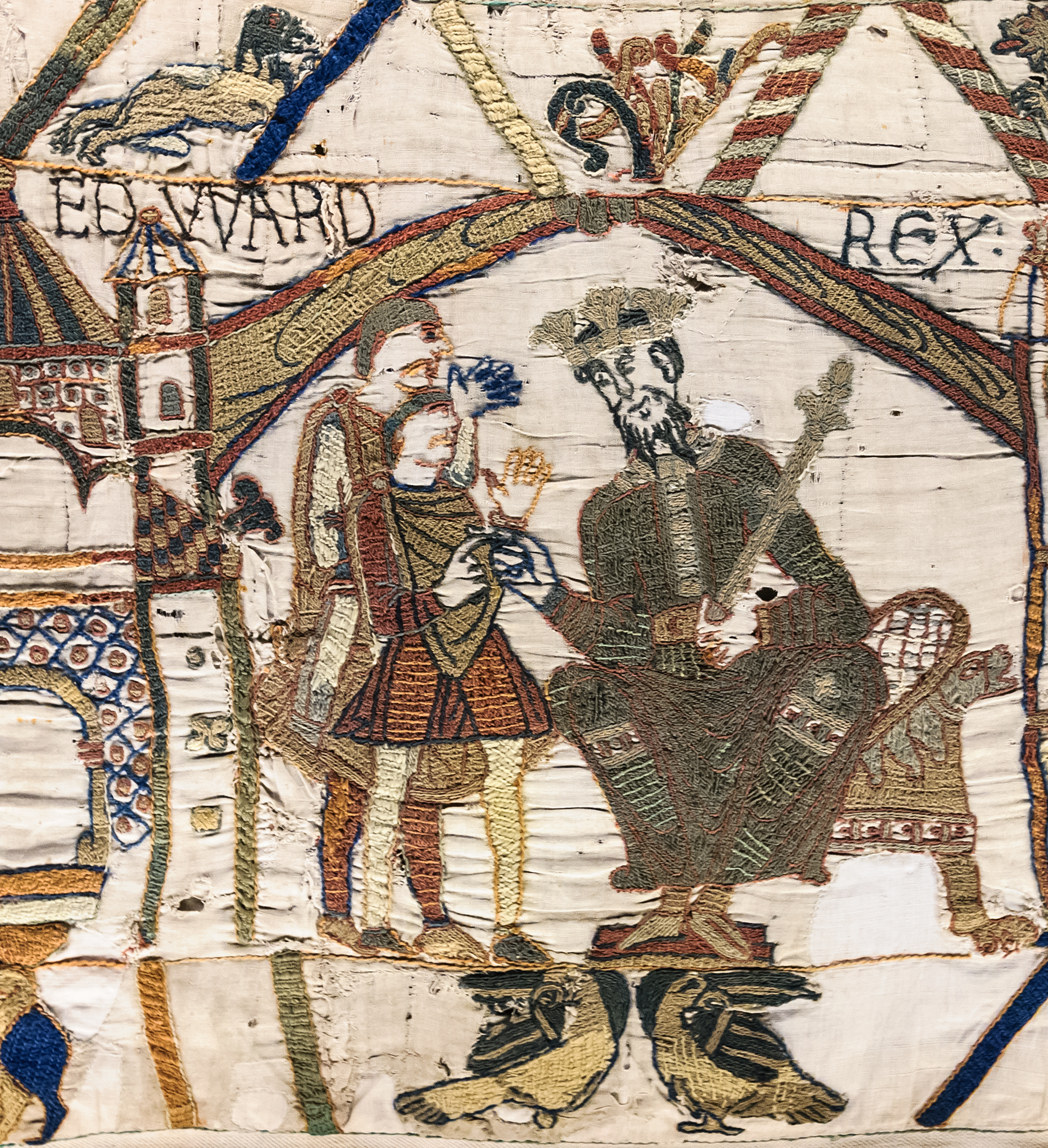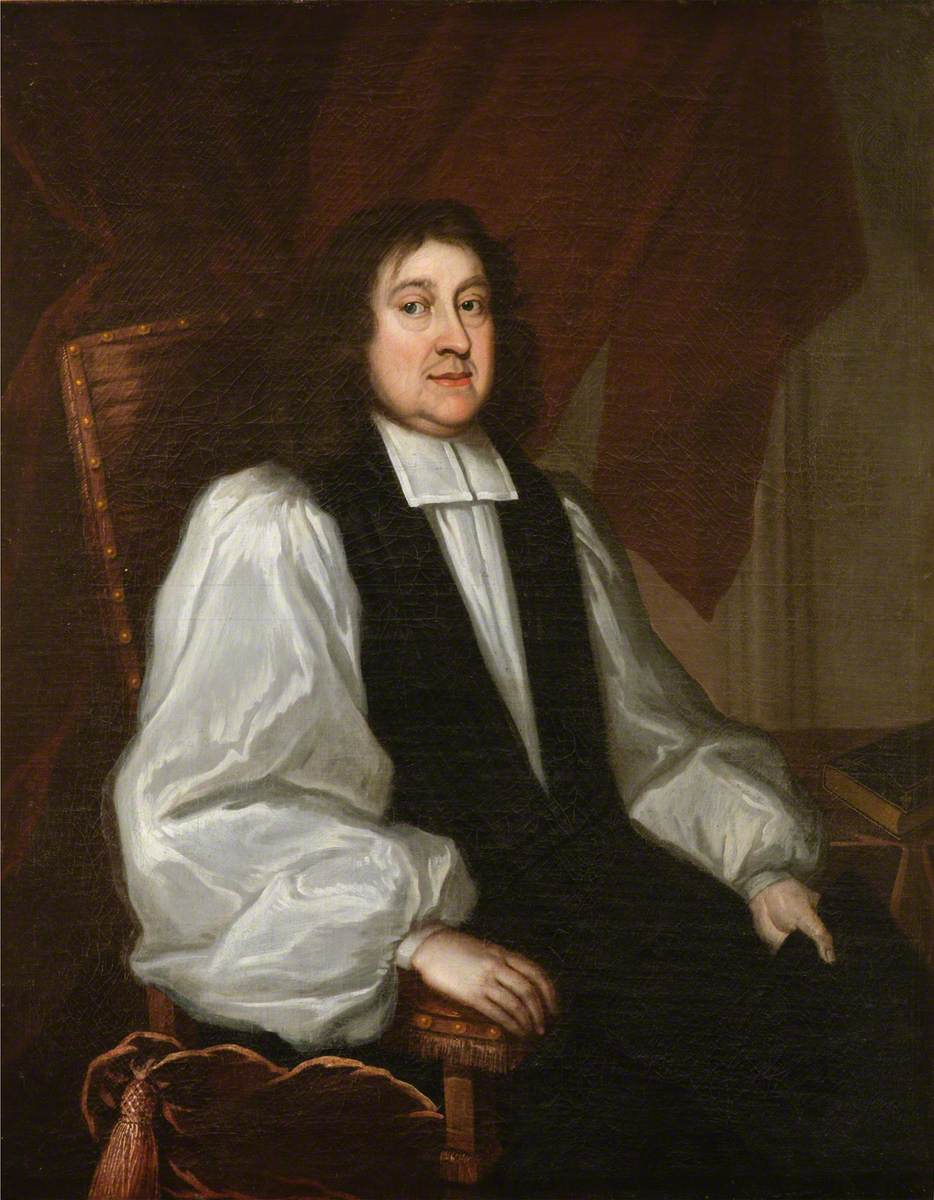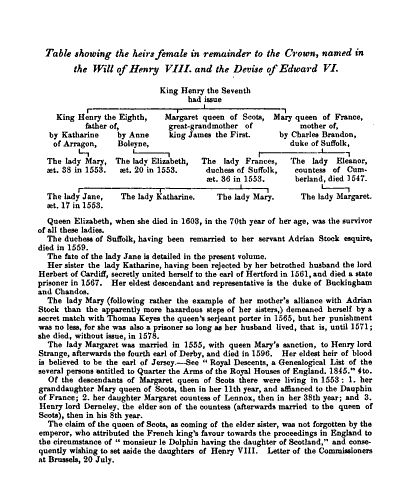|
Coronation Of Edward VI
The coronation of Edward VI as List of English monarchs, King of Kingdom of England, England and Kingdom of Ireland, Ireland took place at Westminster Abbey, London, on 20 February 1547. Edward ascended the throne following the death of King Henry VIII. Background Henry VIII died on 28 January 1547. Edward was nine years old. He was brought from Hertford Castle to Enfield, London, Enfield, where he joined his half-sister Elizabeth I, Elizabeth. He was proclaimed king on 30 January. Edward later wrote that the cause of his father's death was dropsy. Henry was buried at Windsor Castle, Windsor next to Jane Seymour, Edward's mother, on 16 February. The Privy Council of England, Privy Council deliberated on the Will of Henry VIII of England, late King's will concerning the succession. Using the ''Liber Regalis'', they made some changes to the traditional order of coronation ceremonies, avoiding making any doctrinal comments on the proceedings, and explained:for the tedious length of t ... [...More Info...] [...Related Items...] OR: [Wikipedia] [Google] [Baidu] |
King Edward VI
Edward VI (12 October 1537 – 6 July 1553) was King of England and King of Ireland, Ireland from 28 January 1547 until his death in 1553. He was crowned on 20 February 1547 at the age of nine. Edward was the son of Henry VIII and Jane Seymour and the first English monarch to be raised as a Protestant. During his reign, the realm was governed by a regent, regency council because he never reached maturity. The council was first led by his uncle Edward Seymour, 1st Duke of Somerset (1547–1549), and then by John Dudley, 1st Earl of Warwick (1550–1553), who from 1551 was Duke of Northumberland. Edward's reign was marked by economic problems and social unrest that in 1549 erupted into riot and rebellion. An expensive war with Kingdom of Scotland, Scotland, at first successful, ended with military withdrawal from Scotland and Boulogne-sur-Mer in exchange for peace. The transformation of the Church of England into a recognisably Protestant body also occurred under Edward, who took ... [...More Info...] [...Related Items...] OR: [Wikipedia] [Google] [Baidu] |
Dropsy
Edema, also spelled oedema, and also known as fluid retention, dropsy, hydropsy and swelling, is the build-up of fluid in the body's tissue. Most commonly, the legs or arms are affected. Symptoms may include skin which feels tight, the area may feel heavy, and joint stiffness. Other symptoms depend on the underlying cause. Causes may include venous insufficiency, heart failure, kidney problems, low protein levels, liver problems, deep vein thrombosis, infections, angioedema, certain medications, and lymphedema. It may also occur after prolonged sitting or standing and during menstruation or pregnancy. The condition is more concerning if it starts suddenly, or pain or shortness of breath is present. Treatment depends on the underlying cause. If the underlying mechanism involves sodium retention, decreased salt intake and a diuretic may be used. Elevating the legs and support stockings may be useful for edema of the legs. Older people are more commonly affected. The word is ... [...More Info...] [...Related Items...] OR: [Wikipedia] [Google] [Baidu] |
Agnes Strickland
Agnes Strickland (18 July 1796 – 8 July 1874) was an English historical writer and poet. She is particularly remembered for her ''Lives of the Queens of England'' (12 vols, 1840–1848). Biography The daughter of Thomas Strickland and his wife Elizabeth ( Homer), Agnes was born in Rotherhithe, at that time in Surrey, where her father was employed as a manager of the Greenland Dock. She was christened at St Mary's Church, Rotherhithe on 18 August 1796. The family subsequently moved to Thorpe Hamlet, Norwich, and then Stowe House, near Bungay, Suffolk, before settling in 1808 at Reydon Hall, Reydon, near Southwold, also in Suffolk. Agnes' siblings were Elizabeth, Sarah, Jane Margaret Strickland, Jane Margaret, Catharine Parr Traill, Susanna Moodie (1803–1885) Tom and Samuel Strickland. Agnes and her elder sister Elizabeth were educated by their father to a standard more usual for boys at that time. All of the children except Sarah and Tom eventually became writers. Agnes bega ... [...More Info...] [...Related Items...] OR: [Wikipedia] [Google] [Baidu] |
Order Of Precedence
An order of precedence is a sequential hierarchy of nominal importance and can be applied to individuals, groups, or organizations. Most often it is used in the context of people by many organizations and governments, for very formal and state occasions, especially where diplomats are present. It can also be used in the context of decorations, medals and awards. Historically, the order of precedence had a more widespread use, especially in court and aristocratic life. A person's position in an order of precedence is not necessarily an indication of functional importance, but rather an indication of ceremonial or historical relevance; for instance, it may dictate where dignitaries are seated at formal dinners. The term is occasionally used to mean the order of succession—to determine who replaces the head of state in the event they are removed from office or incapacitated—as they are often identical, at least near the top. What follows are the general orders of precedence ... [...More Info...] [...Related Items...] OR: [Wikipedia] [Google] [Baidu] |
Mary I Of England
Mary I (18 February 1516 – 17 November 1558), also known as Mary Tudor, and as "Bloody Mary" by her Protestant opponents, was Queen of England and Ireland from July 1553 and Queen of Spain from January 1556 until her death in 1558. She is best known for her vigorous attempt to reverse the English Reformation, which had begun during the reign of her father, Henry VIII. Her attempt to restore to the Church the property confiscated in the previous two reigns was largely thwarted by Parliament, but during her five-year reign, Mary had over 280 religious dissenters burned at the stake in the Marian persecutions. Mary was the only child of Henry VIII by his first wife, Catherine of Aragon, to survive to adulthood. Her younger half-brother, Edward VI, succeeded their father in 1547 at the age of nine. When Edward became terminally ill in 1553, he attempted to remove Mary from the line of succession because he supposed, correctly, that she would reverse the Protestant refor ... [...More Info...] [...Related Items...] OR: [Wikipedia] [Google] [Baidu] |
St Edward's Crown
St Edward's Crown is the centrepiece of the Crown Jewels of the United Kingdom. Named after Saint Edward the Confessor, versions of it have traditionally been used to crown English and British monarchs at their coronations since the 13th century. The original crown was a holy relic kept at Westminster Abbey, Edward's burial place, until the regalia were either sold or melted down when Parliament abolished the monarchy in 1649, during the English Civil War. The current St Edward's Crown was made for Charles II in 1661. It is solid gold, tall, weighs , and is decorated with 444 precious and semi-precious stones. The crown is similar in weight and overall appearance to the original, but its arches are Baroque. After 1689, it was not used to crown any monarch for over 200 years. In 1911, the tradition was revived by George V and has continued ever since. In 1953, Elizabeth II opted for a stylised image of this crown to be used on coats of arms and other insigni ... [...More Info...] [...Related Items...] OR: [Wikipedia] [Google] [Baidu] |
Gilbert Burnet
Gilbert Burnet (18 September 1643 – 17 March 1715) was a Scottish philosopher and historian, and Bishop of Salisbury. He was fluent in Dutch, French, Latin, Greek, and Hebrew. Burnet was highly respected as a cleric, a preacher, an academic, a writer and a historian. He was always closely associated with the Whig party, and was one of the few close friends in whom King William III confided. Early life: 1643–1674 Burnet was born at Edinburgh, Scotland, in 1643, the son of Robert Burnet, Lord Crimond, a Royalist and Episcopalian lawyer, who became a judge of the Court of Session, and of his second wife Rachel Johnston, daughter of James Johnston, and sister of Archibald Johnston of Warristoun, a leader of the Covenanters. His father was his first tutor until he began his studies at the University of Aberdeen, where he earned a Master of Arts in Philosophy at the age of thirteen. He studied law briefly before changing to theology. He did not enter into the ministry at that ... [...More Info...] [...Related Items...] OR: [Wikipedia] [Google] [Baidu] |
Edward Seymour, 1st Duke Of Somerset
Edward Seymour, 1st Duke of Somerset (150022 January 1552) (also 1st Earl of Hertford, 1st Viscount Beauchamp), also known as Edward Semel, was the eldest surviving brother of Queen Jane Seymour (d. 1537), the third wife of King Henry VIII. He was Lord Protector of England from 1547 to 1549 during the minority of his nephew King Edward VI (1547–1553). Despite his popularity with the common people, his policies often angered the gentry and he was overthrown. Origins and early career Edward Seymour was born c. 1500, the son of Sir John Seymour (1474–1536), feudal baron of Hatch Beauchamp in Somerset, by his wife Margery Wentworth, eldest daughter of Sir Henry Wentworth of Nettlestead, Suffolk, and descended from Edward III. In 1514, aged about 14, he received an appointment in the household of Mary Tudor, Queen of France, and was ''enfant d’honneur'' at her marriage with Louis XII. Seymour served in the Duke of Suffolk's campaign in France in 1523, being ... [...More Info...] [...Related Items...] OR: [Wikipedia] [Google] [Baidu] |
Lord Protector
Lord Protector (plural: ''Lords Protector'') was a title that has been used in British constitutional law for the head of state. It was also a particular title for the British heads of state in respect to the established church. It was sometimes used to refer to holders of other temporary posts; for example, a regent acting for the absent monarch. Feudal royal regent The title of "The Lord Protector" was originally used by royal princes or other nobles exercising a role as protector and defensor of the realm, while sitting also in a council of government, usually when the English monarch was still a minor or otherwise unable to rule. It differs from a continental regency because of the separation of powers. Notable cases in England: * John, Duke of Bedford, and Humphrey, Duke of Gloucester, were (5 December 1422 – 6 November 1429) jointly Lords Protector for Henry VI (1421–1471); * Richard Plantagenet, Duke of York, was thrice (3 April 1454 – February 1455; 19 November ... [...More Info...] [...Related Items...] OR: [Wikipedia] [Google] [Baidu] |
Quinquagesima
Quinquagesima (), in the Western Christian Churches, is the last Sunday of Shrovetide, being the Sunday before Ash Wednesday. It is also called Quinquagesima Sunday, Quinquagesimae, Estomihi, Shrove Sunday, Pork Sunday, or the Sunday next before Lent. Quinquagesima Sunday, being the Lord's Day prior to the start of the Lenten season, is known for its meat consumption as people wished to feast before starting their fast on Ash Wednesday, the first day of Lent. Historically Lutheran countries such as Denmark mark Quinquagesima Sunday as the peak of the Fastelavn. After attending the Divine Service on Shrove Sunday, congregants enjoy Shrovetide buns (fastelavnsboller). Children often dress up and collect money from people while singing. Christians in these nations carry Shrovetide rods (fastelavnsris), which "branches decorated with sweets, little presents, etc., that are used to decorate the home or give to children." In the Revised Common Lectionary the Sunday before Lent is des ... [...More Info...] [...Related Items...] OR: [Wikipedia] [Google] [Baidu] |
Liber Regalis
The ''Liber Regalis'' (Latin for "Royal Book") is an English medieval illuminated manuscript which was, most likely, compiled in 1382 to provide details for the coronation service for Richard II's consort, Anne of Bohemia. Other sources suggest that it may have been compiled in 1308 for the coronation of Edward II. The ''Liber Regalis'' contains the ''ordo'' (order) for the following events: the coronation of a king, a king and queen and a queen alone, and details regarding the funeral of a king; each liturgy opens with a full-page illustration depicting the event. The manuscript provided the order of service for all subsequent coronations up to, and including, that of Elizabeth I. For the coronation of James I the liturgy was translated into English. Nevertheless, with occasional adaptations to suit the political and religious circumstances of the time, the Liber Regalis remained the basis for all later coronation liturgies. The manuscript belongs to Westminster Abbey ... [...More Info...] [...Related Items...] OR: [Wikipedia] [Google] [Baidu] |
Will Of Henry VIII Of England
The will of Henry VIII of England was a significant constitutional document, or set of contested documents created in the 1530s and 1540s, affecting English and Scottish politics for the rest of the 16th century. In conjunction with legislation passed by the English Parliament, it was supposed to have a regulative effect in deciding the succession to the three following monarchs of the House of Tudor, the three legitimate and illegitimate children (the Third Succession Act expressly recognised the illegitimacy of Henry's daughters) of King Henry VIII of England. Its actual legal and constitutional status was much debated; and arguably the succession to Elizabeth I of England did not respect Henry's wishes. Last testament Henry VIII made a final revision to his last will and testament on 30 December 1546. It was signed using the "dry stamp", a device in use since 1545 and under the control of Anthony Denny and John Gates. It confirmed the line of succession as one living male and si ... [...More Info...] [...Related Items...] OR: [Wikipedia] [Google] [Baidu] |






